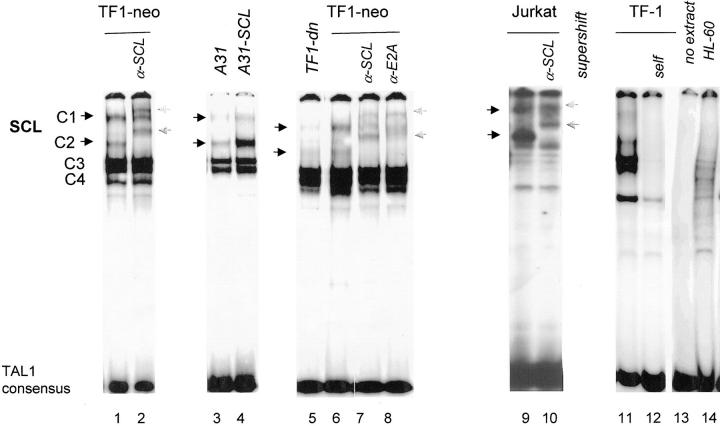Figure 2.
Decreased SCL DNA binding activity in TF-1 cells expressing as-SCL (A31) or a dn-SCL (TF1-dn). TF-1 cells and the different transfectants were maintained in GM-CSF containing medium. Exponentially growing cells were treated with ZnCl2 for 24 h before preparation of nuclear extracts. A double-stranded 32P-labeled TAL1 consensus probe was incubated with 25 μg nuclear extracts from TF-1, TF1-neo, A31, A31-SCL, TF1-dn, Jurkat, and HL-60 as described in Materials and Methods. Unlabeled double-stranded oligonucleotide probes used as competitors were added at 50-fold molar excess. SCL-containing complexes (black arrows) formed on the TAL1 consensus probe were supershifted ( gray arrows) by the monoclonal antibody anti-SCL/TAL1 or anti-E2A, which were added to the binding reaction. These complexes were displaced by a 50-fold molar excess of self (lanes 4, 13, and 17 ) and of the c-kit probe but not by a control probe with divergent sequences, mDE2C (data not shown).

